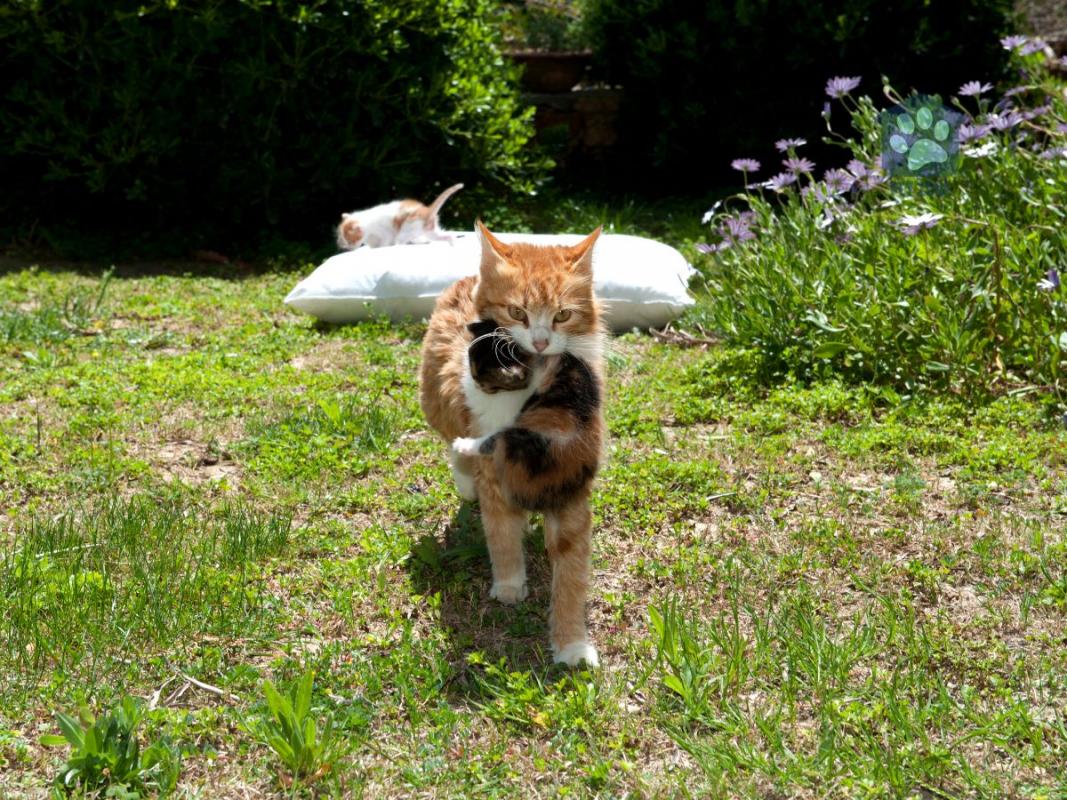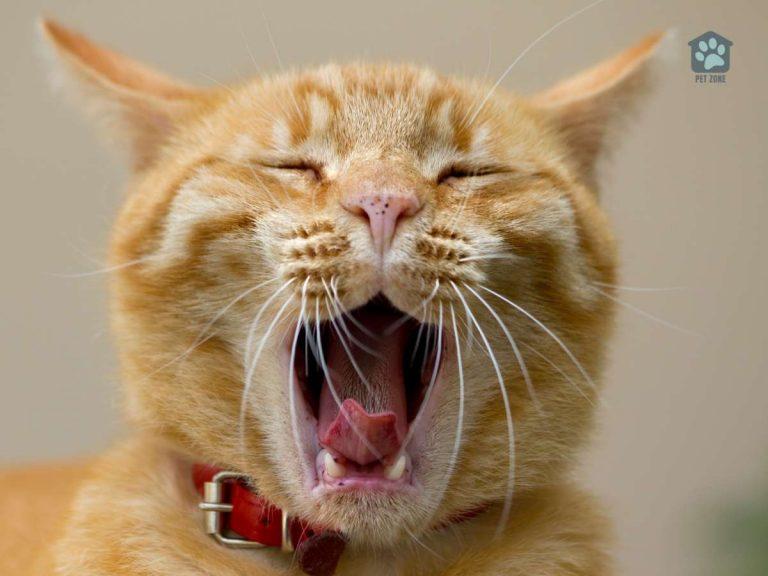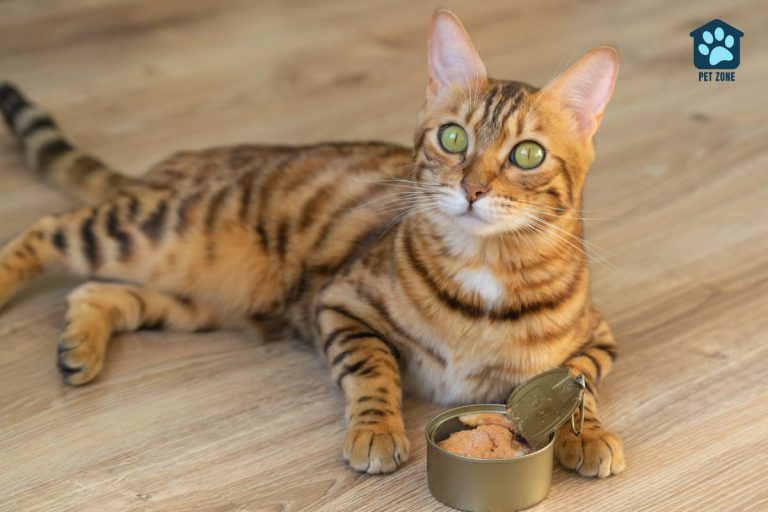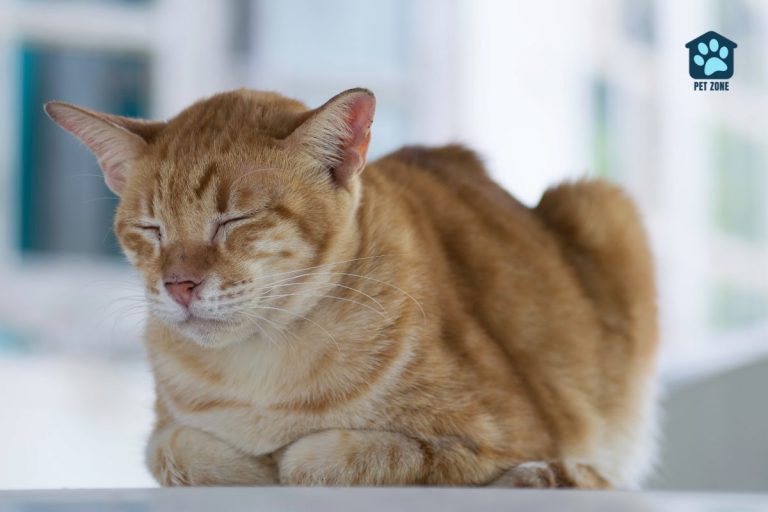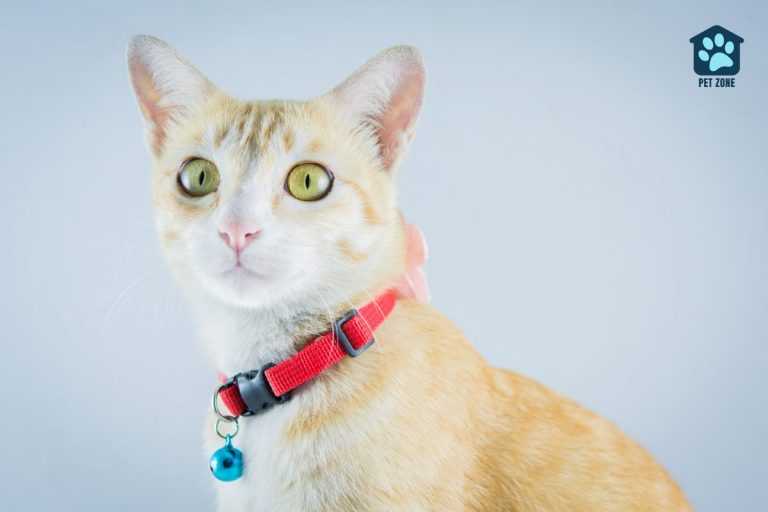Estimated reading time: 10 minutes
Talking Points
Have you ever watched a mother cat meticulously move her tiny kittens one by one, and wondered why she’s doing so?
Imagine the rush of maternal instincts that floods her being, the intense desire to protect her vulnerable newborns from the world around them. Let’s delve into this intriguing subject and understand why our feline friends display such protective behavior.
Reasons for a Mother Cat to Move Her Kittens
A new mother cat may decide to move her kittens for various reasons. Like any doting parent, she desires the best for her fur babies and will go to lengths to ensure their safety and comfort.
Food and Water
One primary reason a mother cat moves her kittens is the necessity for access to food and water. A mama cat needs to nourish herself to produce milk and care for her kittens. As such, if the kittens are located too far away from a reliable food source, she may move the litter to a more convenient location.
Nesting
Mother cats often relocate their kittens to a cleaner, more comfortable nest. This instinct comes from a drive to provide a warm, secure environment for the kittens. Newborn kittens can’t regulate their body temperature well, so a mother cat may decide to move them to a warmer place or change locations if the current nest becomes soiled.
Protection
Protection from predators or disturbances is another important reason mother cats move their kittens. If she perceives a threat, a mother cat will move her kittens to a safer, quieter place. This instinct is particularly strong in feral cats. They often move their kittens to hide them from predators and humans.
Transferring to a New Nest
Sometimes a new mother may move her kittens to a new location in preparation for their future explorations. As soon as the kittens start moving around and exploring, a mother cat may relocate them to a new area that’s safer for their newfound curiosity.
Stress
Lastly, stress can cause a mother cat to move her kittens around. Changes in the environment, such as new pets or people, loud noises, or a sudden shift in routine, can make a mother cat anxious. In these situations, she may decide to move her kittens to a quieter, more secluded spot where she feels they won’t be disturbed.
How Do Mother Cats Move Their Kittens?
When it’s time for a mother cat to move her kittens, she uses a few specific methods that are gentle yet effective, ensuring her precious cargo’s safety.
Using Their Teeth
Mother cats move their kittens using their teeth. But this is not as alarming as it may sound. The mother gently grips her kitten around the scruff of its neck using her mouth. This is a delicate process that doesn’t harm the kitten but allows the mother to maintain a firm grip.
Relocating One Kitten at a Time
Moving a litter of kittens is quite a task! A mother cat usually moves her kittens one at a time. It’s a slow process, but it’s the safest way for a mother cat to ensure that each kitten reaches the new nest securely.
Carrying Them in Their Mouths
The most common image that comes to mind when thinking of a cat moving her kittens is perhaps her carrying them in her mouth. Mother cats have a unique technique of holding their kittens gently but firmly by the scruff of their necks. This technique renders the kittens immobile and safe during transit.
Dragging Them by the Scruff of the Neck
In certain situations, a mother cat may drag her kittens by the scruff of their neck. This doesn’t harm the kittens but allows the mother to move them quickly if needed. This method is often used when the mother cat perceives a sudden threat and needs to move her kittens immediately.
Using a Carrier or Box
When it comes to domestic cats, human caretakers can assist in moving kittens using a carrier or box. This method is safe and secure, especially when needing to move the kittens over longer distances or when a visit to the vet is necessary. It’s crucial to ensure that the carrier or box has plenty of soft bedding to keep the kittens comfortable during the move.
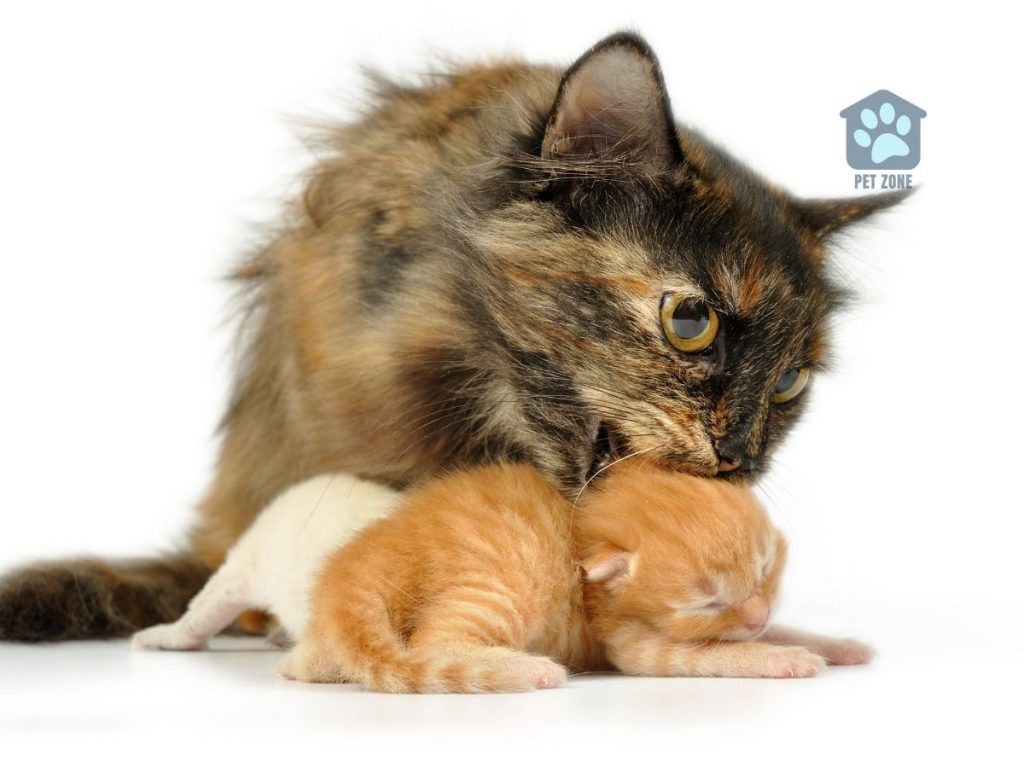
What Should You Do If a Mother Cat Keeps Moving Her Kittens?
If a mother cat keeps moving her kittens around, it can be a cause for concern. But there are several steps you can take to help.
Provide a Stable and Safe Environment
Firstly, try to provide a stable and safe environment. If the cat and her kittens are in a high-traffic area, move them to a quiet place where there’s less disturbance.
Keep away from her nest as much as possible, and instruct others in the household to do the same. You can also provide new clean bedding to make the nest more appealing.
Ensure Access to Food and Water
Make sure the mother cat has easy access to food and water. If she’s straining to find sustenance while nursing, she might move her kittens closer to food sources.
Provide a high-quality diet suitable for a nursing cat to keep her well-fed and hydrated.
Avoid Handling the Kittens
Avoid handling the new kittens too much. A mother cat can become distressed if she smells unfamiliar scents on her kittens, which may cause her to move them.
So, as hard as it may be, it’s best to admire the kittens from a distance when they are a few weeks old.
Consult with a Veterinarian or Animal Rescue Group
If the mother cat keeps moving her kittens and you’ve tried all these methods without success, it may be time to consult with a veterinarian or local animal rescue group. They can provide advice tailored to your situation and even help determine if there’s an underlying health issue causing the behavior.
Consider Foster Care
In extreme cases, where the mother cat is determined to move her kittens incessantly and it’s impacting the kittens’ health or safety, foster care might be an option.
Many animal shelters have programs where experienced volunteers can temporarily care for the kittens. This step should only be taken as a last resort and after consultation with animal care professionals.
Can Feral Cats Move Their Kittens?
Yes, indeed, feral cats can and do often move their kittens. Their reasons are largely similar to those of domestic cats, but with a few unique circumstances considering their wild living conditions.
Yes, They Can and Often Do
Feral cats, much like domestic cats, are driven by maternal instincts to provide the best care for their kittens. They’ll move their kittens when they feel their current location isn’t safe or suitable for their young ones. It’s not uncommon to see feral cats moving their kittens from one location to another.
Feral Cats May Move Their Kittens Due to Threats or Lack of Resources
Threats in a feral cat’s environment are more common and can vary greatly, from other animals to human interference. Feral cats tend to move their kittens more often due to these potential dangers.
Likewise, access to resources like food, water, and suitable shelter can be challenging in the wild. Thus, a feral cat may move her kittens to an area where these resources are more readily available.
Relocating Feral Kittens Can be Challenging
As an observer, it can be difficult to watch a feral cat move her kittens around, especially if the kittens appear to be in distress or the environment seems dangerous.
However, relocating feral kittens can be challenging and is often best left to professionals.
Consult with a Feral Cat Expert or Animal Rescue Group
If you’re concerned about the well-being of feral kittens, it’s recommended to reach out to a local animal rescue group or a feral cat expert. These professionals have the training and resources to intervene when necessary, ensuring the best outcome for the mother cat and her kittens.
Consider TNR (Trap-Neuter-Return) Programs
One effective way to assist feral cats and control the feral cat population is through TNR (Trap-Neuter-Return) programs. TNR involves trapping feral cats, having them spayed or neutered, and then returning them to their original location.
These programs can help to improve the overall health of the feral cat population and reduce the number of kittens that a feral cat has to care for and possibly move.
What Should You Do if You Find a Mother Cat and Her Kittens?
Stumbling upon a mother cat and her kittens can be a heartwarming experience, but it’s essential to approach the situation with the cats’ best interests at heart. Here’s what you can do to help without causing stress or harm.
Observe from a Distance to Assess the Situation
First, observe from a distance. This is vital both for your safety and the welfare of the cats. Don’t rush in to scoop up the kittens; instead, assess the situation. Are the kittens clean and content, or do they appear neglected or in distress? Is the mother cat present and attentive?
Provide Food and Water for the Mother Cat
If the mother cat is around and appears to be taking care of the kittens, provide food and water for her. Remember, she needs plenty of nutrition to feed her kittens and keep herself healthy. However, keep your distance and do not try to touch the cat or her kittens.
Do Not Touch the Kittens Unless Absolutely Necessary
Resist the urge to handle the kittens unless it’s absolutely necessary. If they appear healthy and well cared for, it’s best to leave them with their mother. Touching the kittens can distress the mother and may even cause her to abandon them.
Contact a Local Animal Rescue Group or Veterinarian for Assistance
If the kittens appear to be in danger, are sick, or if the mother cat is absent or unable to care for them, contact a local animal rescue group or veterinarian. They can provide guidance and assist with safe, humane intervention if necessary.
Consider Fostering or Adopting the Cats if Possible
If the mother cat and her kittens are domestic and not feral, consider fostering or adopting them if you have the means to do so. This could provide the kittens with a safe, stable environment and a chance for a loving forever home. However, this decision should not be taken lightly and requires a commitment to the care and well-being of the cats.
Conclusion
Understanding the reasons why mother cats move their kittens, whether they’re domestic or feral, allows us to appreciate the depth of their maternal instinct. These feline moms are driven by a natural desire to provide safety, warmth, and nourishment for their kittens.
Whether it’s seeking a cleaner nest, moving closer to a food source, protecting against perceived threats, or reacting to environmental stress, these mothers are ever vigilant in their care.
If you encounter a mother cat and her kittens, remember to respect their space and observe from a distance.
If you believe intervention is necessary, seek professional advice from a veterinarian or local animal rescue group. And always consider supporting local TNR programs to help control the feral cat population.
With understanding and compassion, we can better coexist with these furry families and marvel at the wonders of their feline world.
Please Comment and Share
We hope you found this article helpful! If you have any thoughts or experiences you’d like to share, please feel free to leave a comment below. We love hearing from our readers.
And if you think this article could help other cat lovers, don’t hesitate to share it on your social media platforms. Your shares help us reach more interested pet people. Thanks for your support!


